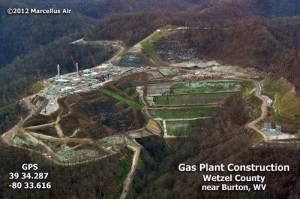Production of high octane components for gasoline blending has some refiners committing to expanding alkylation capacity. For example, Valero Energy Corporation reported at the end of January record exports of gasoline to Latin America. In view of that extended opportunity, Valero is investing $300 million in converting a C4 alkylation unit at their Houston refinery to C5 alkylation, having already worked with Invensys Operations Management in completing advanced control and instrumentation upgrades to various alkylation units at seven of their refineries based on the InFusionTM Enterprise Control System.
According to what was mentioned by a Valero executive on a 4th Quarter 2015 earnings report to the press and investors, “this [alkylation] project serves as a way to move plentiful NGLs into the gasoline pool” (startup of the 13,000 bpd alky unit is planned for mid-2019). According to a Reuters report from last summer, although U.S. gasoline demand has been trending down since 2007, it jumped back up more than 8% compared to summer 2014 as global crude prices plummeted along with retail gasoline prices. More motorists are choosing to buy higher octane premium gasoline, thereby increasing the demand for alkylate components. But the Reuters report noted that even if gasoline prices rebound, the sales of premium fuels (98 octane) are expected to increase as auto manufacturers build more high-compression engines to meet higher U.S. Corporate Average Fuel Economy (CAFÉ) standards through 2025.
Other energy companies including Alon USA Energy and Marathon may add alkylation capacity. Alon is considering adding alkylation capacity at their Big Spring facility while Marathon, in partnership with and MarkWest Energy Partners LP is considering a stand-alone alkylation unit at and MarkWest’s NGL fractionation complex in eastern Ohio, more than 60 miles from the nearest refinery. The proposed MarkWest alky unit will take advantage of cheap and plentiful butane (to isobutane). U.S. butane field production hit a 34-year high in April 2015 at close to 10.19 million barrels. This makes alkylate cheaper to produce than reformate from a catalytic reformer. Actually, Valero had also considered making improvements to an existing catalytic reformer for production of high octane reformate, but instead opted for the C4 to C5 alkylation conversion project.
Alkylate production based on reacting isobutane with C3, C4 or C5 olefins with sulfuric acid (serving as the catalyst in the alkylation reactor) requires separating and withdrawing spent sulfuric acid from the reactor and regenerating outside the unit while being replaced with fresh regenerated acid. In this aspect, acid consumption remains a significant operating expense for many sulfuric acid (H2SO4) alkylation units. One technology supplier, CDTECH claims to have developed an alkylation process (CDAlky) that produces top quality alkylate while reducing H2SO4 consumption, thereby mitigating the expense [of regeneration]. According to information available from CDTECH, operating conditions and a simplified flow scheme also reduce capital and utilities expenses when compared to conventional technologies. The process is designed such that existing equipment assets are reusable.
Like other proprietary alkylation unit designs, the CDAlky process can utilize C4 and C5 components from the FCC unit, while designing for a high contaminant tolerance. For example, one contaminant in the FCC C4 product that can vary over a wide range is 1, 3-butadiene (1,3-BD). According to a recent paper from CDTECH, the 1, 3-BD level can be less than 1000 ppm under moderate operating conditions, but can easily exceed 5,000 ppm when the FCC unit is processing residue feedstocks and operating at high conversions, which is why the CDAlky process was designed to tolerate elevated levels of 1, 3-BD in the olefin feed.
A recent CDTECH white paper authored by S. W. Shorey noted that the amount of H2SO4 consumed per pound of BD in the feed ranges between 10-14 lbs H2SO4/lb-BD. In the CDAlky process the increase in H2SO4 consumption is only 30% of the increase expected in conventional processes (e.g., less than 0.1 lbs/gal of alkylate versus about 0.3 lbs/gal for 5,000 wppm BD in the feed). The proprietary reactor vessel is a simple design, containing no moving parts. Enhanced proprietary mass transfer accomplishes the mixing of the H2SO4 acid and light hydrocarbon liquid. The heat of reaction is removed directly within the process with no heat transfer service in contact with the acid. More developing information on alkylation technology can be found in RefineryOperations.com.








Leave a Reply
You must be logged in to post a comment.